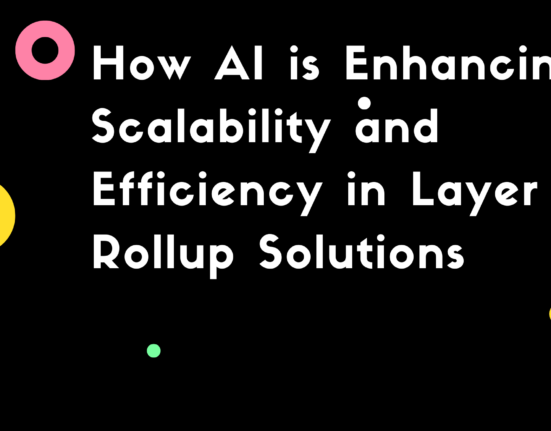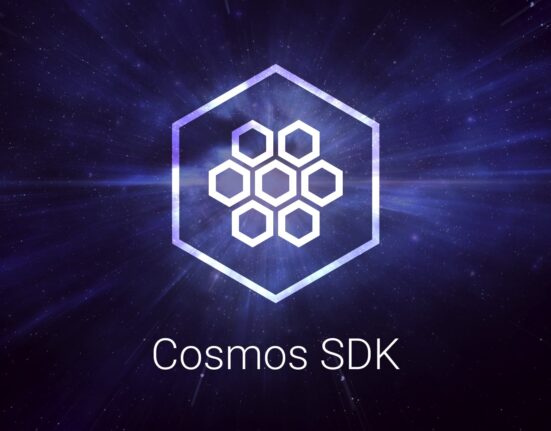Ethereum has revolutionized blockchain technology and decentralized applications (dApps) by enabling smart contracts and providing a platform for decentralized finance (DeFi). However, as Ethereum has grown in popularity over the years, it has faced some scaling limitations that have constrained its ability to process large volumes of transactions quickly and cheaply. One solution that has emerged to help scale Ethereum are “optimistic rollups.”
Contents
- 1 What are Optimistic Rollups?
- 2 Use Cases for Optimistic Rollups
- 3 Key Advantages of Optimistic Rollups
- 4 History and Development of Optimistic Rollups
- 5 The Future Outlook for Optimistic Rollups
- 6 Comparison to Other Scaling Solutions
- 7 Conclusion
- 8 FAQs
- 8.1 What is an Optimistic Rollup?
- 8.2 How does Optimistic Rollup work?
- 8.3 What is the main advantage of Optimistic Rollups?
- 8.4 How is security maintained in Optimistic Rollups?
- 8.5 What is the role of validators in an Optimistic Rollup network?
- 8.6 How do users interact with Optimistic Rollup networks?
- 8.7 Can any Ethereum application migrate to Optimistic Rollups?
- 8.8 What happens in case of a dispute in Optimistic Rollups?
- 8.9 How does Optimistic Rollup impact Ethereum’s throughput?
- 8.10 Are there any limitations or challenges associated with Optimistic Rollups?
What are Optimistic Rollups?
Optimistic rollups are a layer 2 scaling solution for Ethereum that allows dApps to “roll up” hundreds of transactions into a single transaction on the Ethereum mainnet. This effectively compresses the transaction data, reducing fees and congestion on the main blockchain.
Here’s how optimistic rollups work:
- Transactions are executed off-chain on layer 2 side chains and then transmitted to the main Ethereum chain in a compressed “rollup” format. This saves on fees compared to executing every transaction directly on layer 1.
- The transactions are executed optimistically, assuming they are all valid. This avoids having to validate every transaction on layer 1.
- Once the rollup is submitted to the main chain, anyone can challenge the validity of the transactions within a fixed time period.
- If there are no challenges, the rollup is considered valid and finalized. The compressed transaction data is stored permanently on the main chain.
- If there is a challenge, the invalid transaction is kicked out, and the remainder are rolled up again and submitted to the main chain.
Optimistic rollups bundle transactions off-chain, submit a compressed snapshot to Ethereum, and rely on a challenge period to resolve any invalid transactions. This scales Ethereum while leveraging the security of the main chain.
| Scaling Solution | Pros | Cons |
|---|---|---|
| Optimistic Rollups | High throughput, low fees, leverages Ethereum security | Requires week-long challenge period |
| ZK Rollups | Faster withdrawal times | Computationally intensive |
| Sidechains | Independent chains, flexible functionality | Reduced security, liquidity fragmentation |
| Sharding | Native protocol-level scaling | Very complex to implement |
| Channels | Fast and cheap payments | Limited use cases beyond payments |
Use Cases for Optimistic Rollups
Optimistic rollups are well-suited for scaling decentralized finance (DeFi) applications that require high transaction throughput. Here are some of the main use cases:
- Decentralized exchanges (DEXs) – Processing large volumes of trades quickly and cheaply.
- Lending protocols – Managing many loans and interest payments simultaneously.
- Stablecoins – Facilitating efficient transfers and swaps of stablecoin assets.
- Non-fungible tokens (NFTs) – Creating and trading high volumes of NFT assets.
- Gaming dApps – Supporting complex gaming dApps with frequent transactions.
In essence, optimistic rollups help scale any dApp that currently faces congestion, high gas fees or slow settlement times on Ethereum layer 1. They are applicable to both financial and non-financial use cases.
| Ethereum L1 | Arbitrum (L2 Rollup) | Optimism (L2 Rollup) | |
|---|---|---|---|
| Average Fee | $10-30 | $0.05 | $0.001 |
Key Advantages of Optimistic Rollups
Here are some of the key benefits that optimistic rollups offer over other scaling solutions:
- Increased throughput – Bundling transactions can increase throughput up to 100-200x compared to layer 1.
- Lower fees – Rollups mean much lower fees for dApp users compared to submitting directly to layer 1.
- Ethereum security – Transactions benefit from the security of the Ethereum mainnet.
- EVM compatibility – They are EVM-compatible, making it easy for existing dApps to migrate to rollups.
- Faster settlement – Rollup transactions settle faster than layer 1 transactions.
- Decentralization – Rollups maintain a decentralized transaction processing model.
Optimistic rollups provide a significant scaling boost for Ethereum without compromising on key benefits of security, fees, compatibility, speed and decentralization.
| Date | Milestone |
|---|---|
| 2018 | Concept whitepaper released |
| 2020 | Optimism rollup launched |
| 2021 | Arbitrum rollup launched |
| 2022 | Over $2 billion in DeFi TVL on L2 |
| 2023 | Predicted: Increased enterprise adoption |
History and Development of Optimistic Rollups
The concept of optimistic rollups was first proposed in a whitepaper by John Adler and Mikhail Vladimirov in 2018. It built upon Plasma, an earlier layer 2 scaling framework.
Optimism was launched in 2020 as the first production implementation of optimistic rollups. It was founded by researchers at Stanford and MIT, and has partnered with Synthetix, Uniswap and other DeFi projects.
In 2021, Optimism launched its Optimistic Virtual Machine (OVM), enabling Ethereum smart contracts to run on the Optimism side chain. This opened the door for developers to build rollup-native dApps.
Read: Types of Blockchain Rollups
Other notable optimistic rollup solutions include Arbitrum One, Offchain Labs, Fuel Network, Cartesi and ImmutableX. Major DeFi platforms like Synthetix, Uniswap and dYdX have integrated optimistic rollups over the last 1-2 years.
Overall, optimistic rollups have quickly gone from concept to reality as a key Ethereum scaling solution. Rapid innovation is occurring as researchers and developers build out the ecosystem of rollup solutions.
The Future Outlook for Optimistic Rollups
The future looks bright for optimistic rollups as they are adopted by more and more dApps. Here are some key developments to expect:
- More specialization: Rollups optimized for specific use cases like DEXs, NFTs or gaming.
- Cross-rollup communication: Seamless transfer of assets and data between different rollups.
- Rollup interoperability: Allowing assets to be exchanged directly between rollups.
- Multichain rollups: Rollups that span across Ethereum sidechains and alt L1s.
- Regulatory clarity: Regulations adapted specifically to transactions on rollups.
- User experience improvements: Better onboarding, private key management and wallet support.
- Formal verification: Mathematical proofs of rollup system correctness and reliability.
- Institutional adoption: Large institutions like banks utilizing rollups for asset transactions.
Optimistic rollups have a central role to play in Ethereum’s ongoing evolution into a thriving smart contract ecosystem accessible to mainstream users and enterprises.
Comparison to Other Scaling Solutions
There are several different approaches for scaling Ethereum transactions. Here is a brief comparison between optimistic rollups and some other popular scaling solutions:
- Plasma chains – Similar to rollups but have some limitations around exit times and complexity. Not as efficient as newer rollups.
- Zero-knowledge (ZK) rollups – Also bundle transactions off-chain but use zero-knowledge proofs for validity. This offers faster withdrawals but computational overhead.
- Sidechains – Independent blockchains that connect to Ethereum, so have some tradeoffs around decentralization and security.
- Sharding – Splitting the Ethereum chain into shards. A native protocol upgrade that is complex and still a work in progress.
- Channels – Similar to rollups but focused on payments rather than smart contracts. Includes limitations around use cases.
Optimistic rollups provide a great balance of scalability, security, decentralization and ease of use compared to these other solutions. Their unique benefit is compressing computation and allowing validity to be efficiently verified on-chain.
Conclusion
Optimistic rollups are a promising innovation that can help unlock the full potential of Ethereum. By bundling transactions off-chain, they offer major improvements in throughput, fees and latency compared to the base Ethereum layer 1.
Rollups are already seeing rapid real-world adoption among leading DeFi applications. They are poised to enable the next level of innovation in decentralized finance, gaming, NFTs and other emerging blockchain use cases.
With continued research and development, optimistic rollups can pave the way for Ethereum to truly scale into a massively decentralized world computer that billions of users can build upon. Their design elegantly leverages the security of the underlying blockchain while amplifying its capabilities. Overall, rollups are a hugely important step forward on the path to mainstream blockchain adoption.
FAQs

Subhadra, a seasoned research analyst, specializes in distilling complex developments in blockchain and AI into insightful narratives. Her expertise lies in providing a nuanced understanding of emerging technologies, making her a trusted source for in-depth and up-to-date analysis at the intersection of blockchain and AI.







